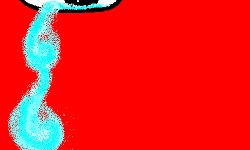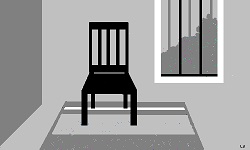Blog by Lauraine M.H. Vivian
The VIH-suriv

Her whole body encrusted in sarcoptes scabiei, a 50-year-old woman lay in foetal position on a hospital bed in Cape Town (Richards 2021). It was 2012 and I, a medical anthropologist, was accompanying a consultant on a clinical teaching ward round. She diagnosed her condition as Norwegian Scabies but the fissures in her flesh marked her HIV status. In preparation for our medical humanities tutorial, I asked the students to find out why her neighbours had not helped her? She told them of her husband’s unfaithfulness, his disappearance and her silent shame. Unpacking their interview revealed the social injustices that worsened her impaired immunity. Having propagated in her body, the HIV-virus insinuated itself in unsaid, shameful relations so that untreated, it transmogrified her into a grotesque monstrosity that falsely named her as bewitched. Thirty years into this pandemic with statistics showing that women over 45 made up 9% of all HIV infections, a much-lauded roll out of generic anti-retroviral medication had passed her by. Pillay-van-Wyk et al (2019) state that in the period between the first death in 1983 and 2012, despite an intensified ART rollout in 2004, an estimated 3,189,000 people died of HIV/AIDS in South Africa. While the rate of infection in women appeared to peak, amongst men it insidiously increased because they resisted seeking help. Seemingly, a disconnect existed between this superficial tally and the substantial impact of stigma and neglect on social and sexual behaviour. This meant that in her community, where belonging meant arriving uninvited in a person’s home, no one intruded in hers.
The 91-dovic-suriv

A decade later, while working as a healthcare provider in the UK, I was confronted by a new pandemic, Covid-19. In this social justice disconnect, I cared for an eighty-year-old, skeletally thin woman, her scaly, dry feet, itching with an untreated fungal infection. My work was to silently bathe away months of the unspoken neglect that too frequently marks the bodies of the elderly. On Zoom a disconnected doctor prescribed topical creams to treat her feet. This was April 2020 and within days of lockdown happening, after spending months in a coma in hospital and recovering in a care home, she came home. Horrifyingly, by a single day, she had missed being a statistic for ‘deaths in care homes’ in the first months of Covid-19. Alone and vulnerable, she was the ideal hostess for the highly infectious, airborne virus that wiped through these corridors naming those deemed too old to be useful or meaningful to kin and community. The magnitude of this in England and Wales was described by O’Dowd (2020): “On 10 April, the first day the Care Quality Commission (CQC) was able to distinguish whether a death involved covid-19, the figures show 95 deaths among care home residents…Over the next two weeks (10-24 April) the number of deaths increased to 4343…”.
The Pandemic Rubik’s-Cube
In 2020 the World Health Organisation (WHO) reported a global figure of 36.3 million AIDS-related deaths and 37.7 million people living with HIV. In South Africa alone for the year 2019, there had been 72,000 AIDS-related deaths and 7.5 million people were living with HIV. In December 2020, one year into the Covid-19 pandemic over 75 million cases and 1.6 million deaths were reported globally. While this statistical evidence clearly shows the devastating impact of viral epidemics, it demonstrates how disconnect is instantiated in social justice systems when number counting and algorithms seek, as with the Rubik’s Cube, to affect a conceptual end state of set six faces of different colours. Statistics constrain lived experience into constructs that disconnect our conscious awareness from what is authentic. In contradistinction, medical anthropologists argue that the ‘magic-cube’ is never static but holds diverse permutations and inter-related meanings. Focusing on the miniscule mite, anthropologists seek what re-connects us to other biologically and culturally inscribed beings which persistently ricochet off each other. They understand that the manifestation of dis-ease is preceded by and subsequently institutes imbalances and injustices which tip localities into pathological states. Restitution lies not in statistical inferences but redressing the biological, social, legal and ethical blindness embedded by dis-ease. Fungal infection can only be understood in the context of social injustice; felt loneliness, isolation, lock-down becoming locked in and the self being forgotten. This requires that we move away from digitally described end-state solutions to facilitate a conscious re-thinking of the shifting algorithms in culturally patterned, face-to-face relationships.
References
O’Dowd, A. “Covid-19: Care home deaths in England and Wales rise sharply.” BMJ 2020; 369: m17272020.
Pillay-van Wyk, et al. “HIV/AIDS mortality trends pre and post ART for 1997-2012 in South Africa–have we turned the tide?” South African Medical Journal 109, no. 11b (2019): 41-44.
Richards, R.N. “Scabies: Diagnostic and therapeutic update.” Journal of cutaneous medicine and surgery 25, no. 1 (2021): 95-101.
Lauraine M. H. Vivian is a Medical Anthropologist who tutors in medical education in the College of Medicine and Veterinary Medicine, Edinburgh Medical School. From 2000–2014 she wrote culture into medical education at the University of Cape Town, South Africa.